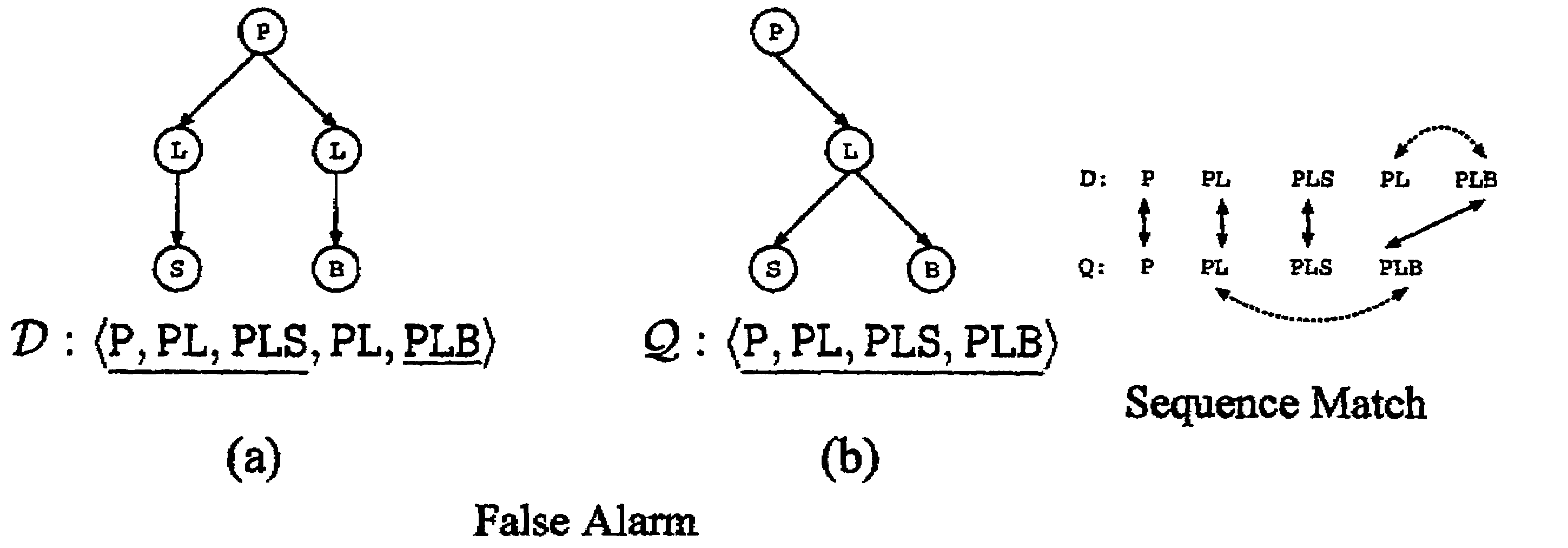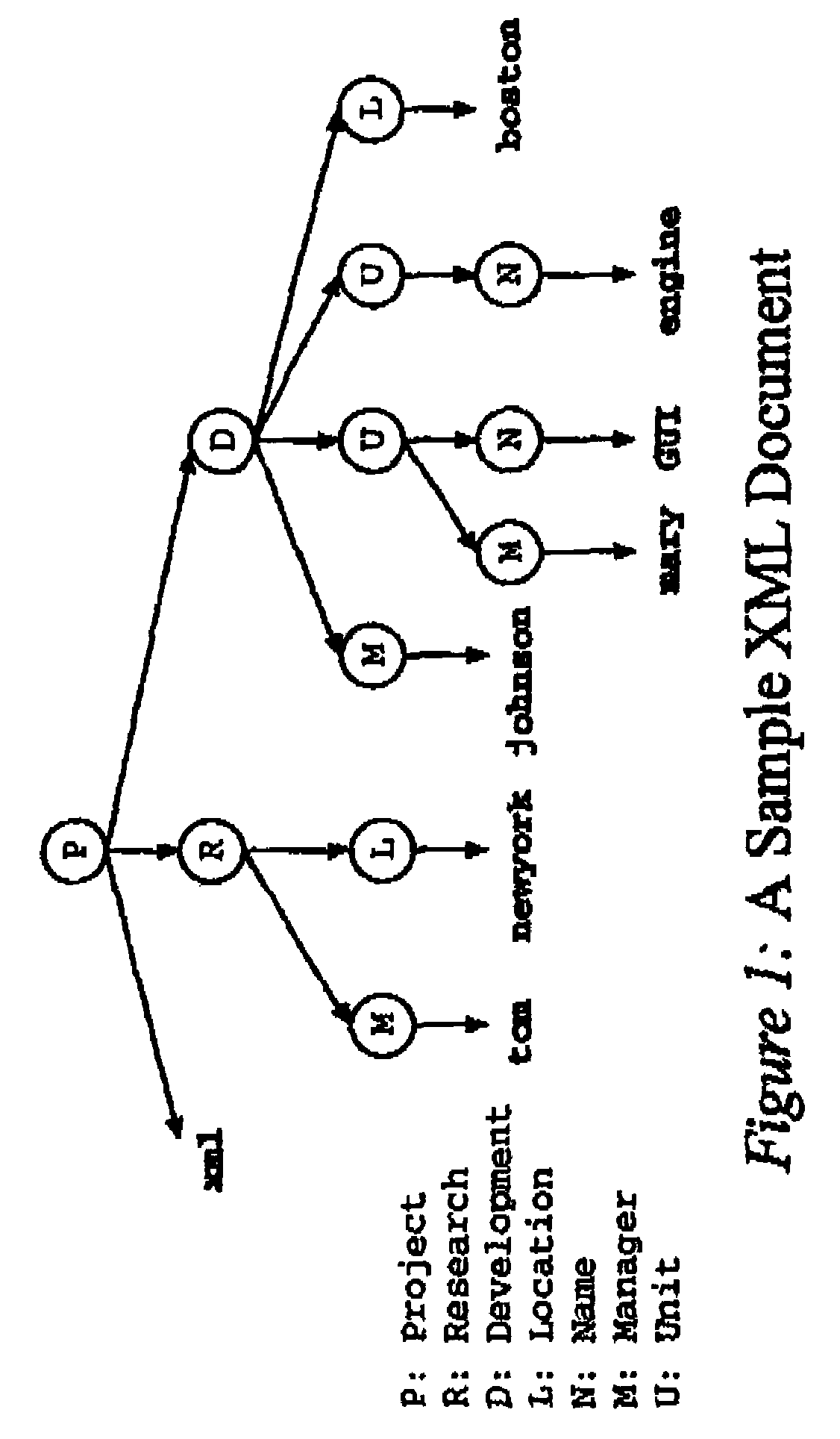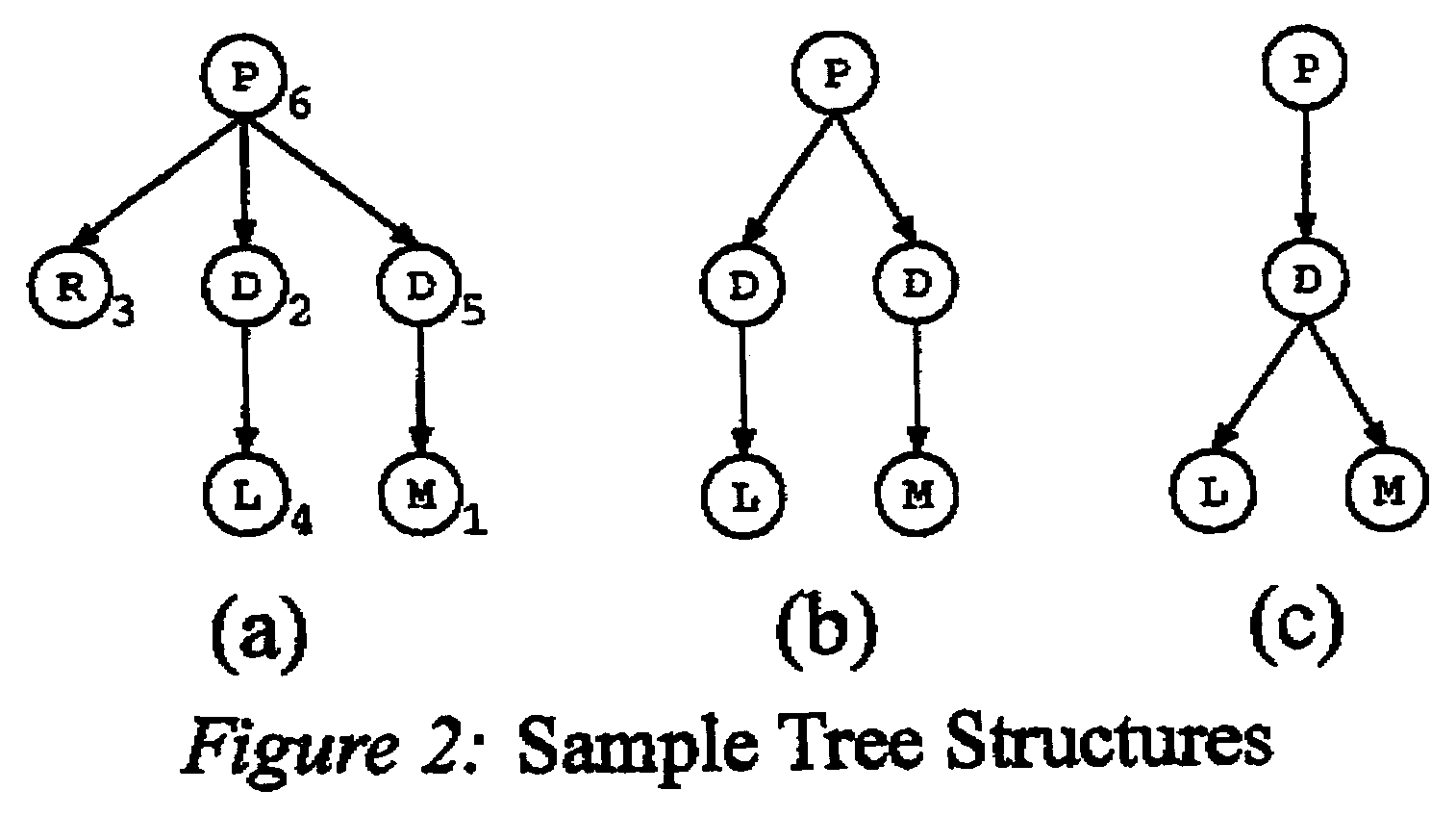System and method for tree structure indexing that provides at least one constraint sequence to preserve query-equivalence between xml document structure match and subsequence match
a tree structure and constraint sequence technology, applied in the field of indexing xml by tree structure, can solve the problems of inefficiency and shortcomings of conventional approaches to tree structure indexing via xml, and achieve the effect of avoiding expensive join operations
- Summary
- Abstract
- Description
- Claims
- Application Information
AI Technical Summary
Benefits of technology
Problems solved by technology
Method used
Image
Examples
Embodiment Construction
[0031]Tables and algorithms referred to herebelow are provided at the close of the instant disclosure.
[0032]By way of general introduction, sequence-based approaches such as those contemplated herein open up many new research issues. Previous works singled out ad hoc sequencing methods such as the depth-first traversal and the Prüfer codes (for a discussion on this and Prüfer sequences, see H. Prüfer. Neuer Beweis eines Satzes über Permutationen. Arch. Math. Phys. 27:142-144, 1918). On the other hand, two questions (among others) are asked herein:[0033]1. What are the sequencing methods that preserve the query equivalence between structure and sequence match?[0034]2. Given a dataset, which sequencing method shall we use in order to maximize the performance of indexing and querying?
[0035]The above challenges are built upon herein in at least three aspects: i) the representation of tree structures, ii) the query equivalence, and iii) the performance-oriented sequencing principle. Thes...
PUM
 Login to View More
Login to View More Abstract
Description
Claims
Application Information
 Login to View More
Login to View More - R&D
- Intellectual Property
- Life Sciences
- Materials
- Tech Scout
- Unparalleled Data Quality
- Higher Quality Content
- 60% Fewer Hallucinations
Browse by: Latest US Patents, China's latest patents, Technical Efficacy Thesaurus, Application Domain, Technology Topic, Popular Technical Reports.
© 2025 PatSnap. All rights reserved.Legal|Privacy policy|Modern Slavery Act Transparency Statement|Sitemap|About US| Contact US: help@patsnap.com



